At Habitat Studio, our goal is to minimize the impact of our homes on the environment with energy conscious building practices that will benefit Edmonton and the Earth for generations. One of the ways that we focus on doing this is through our solar division.

Why Choose Solar?
As the sunniest province in Canada with an average of 312 sunny days per year, Alberta is the perfect place to harness solar power for our homes. Paying for electricity is increasingly expensive and costs can be unpredictable. Harnessing solar energy for electricity production gives you an opportunity to regain some control over your household energy costs, while benefiting the environment.
Solar Services
Below is a list of the services that our solar division offers:
- Residential solar
- Permit and grant application assistance
- Off-grid power solutions
- Solar PV system service
- Analysis and troubleshooting
- Energy monitoring
- Battery storage
- EV charging
- Electrical Service/Panel upgrades
- Net Zero planning
Why Choose Habitat Studio For Your Solar Needs?
- Quality: Habitat Studio is committed to the highest level of quality. We carefully select the best components and industry-leading performance models to ensure your PV system operates at optimum production. Our highly trained installation crews take pride in delivering beautiful, well-designed solar arrays. We intentionally consider every aspect of your installation, from the PV modules to the bolts on the roof, giving you peace of mind throughout many years of solar generation.
- Professional: Your experience is central to our business. We manage every part of the design and installation of your project with professionalism and care. Habitat Studio understands the importance and value of home improvement projects. We are proud of our record of customer satisfaction.
- On Time: We believe that taking time for a quality installation is well worth the effort, and we believe in the value of following through on our commitments. We have the experience to deliver your project on-time and on-budget, while operating with care and diligence.
As a custom home builder in Edmonton that focuses on creating sustainable and energy efficient homes, we often install solar on our new build homes, but we also install solar arrays on existing homes – whether or not you build your home with Habitat Studio!
For more information about our solar division or to inquire about installation, contact us to speak to our solar expert.
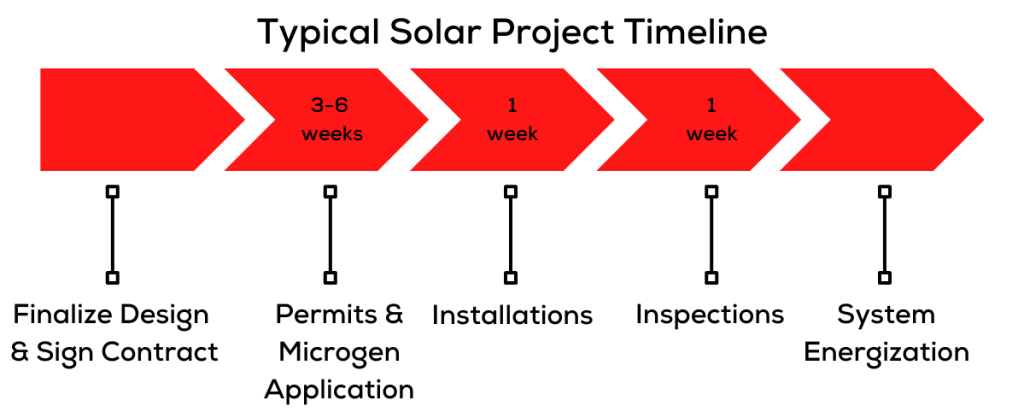

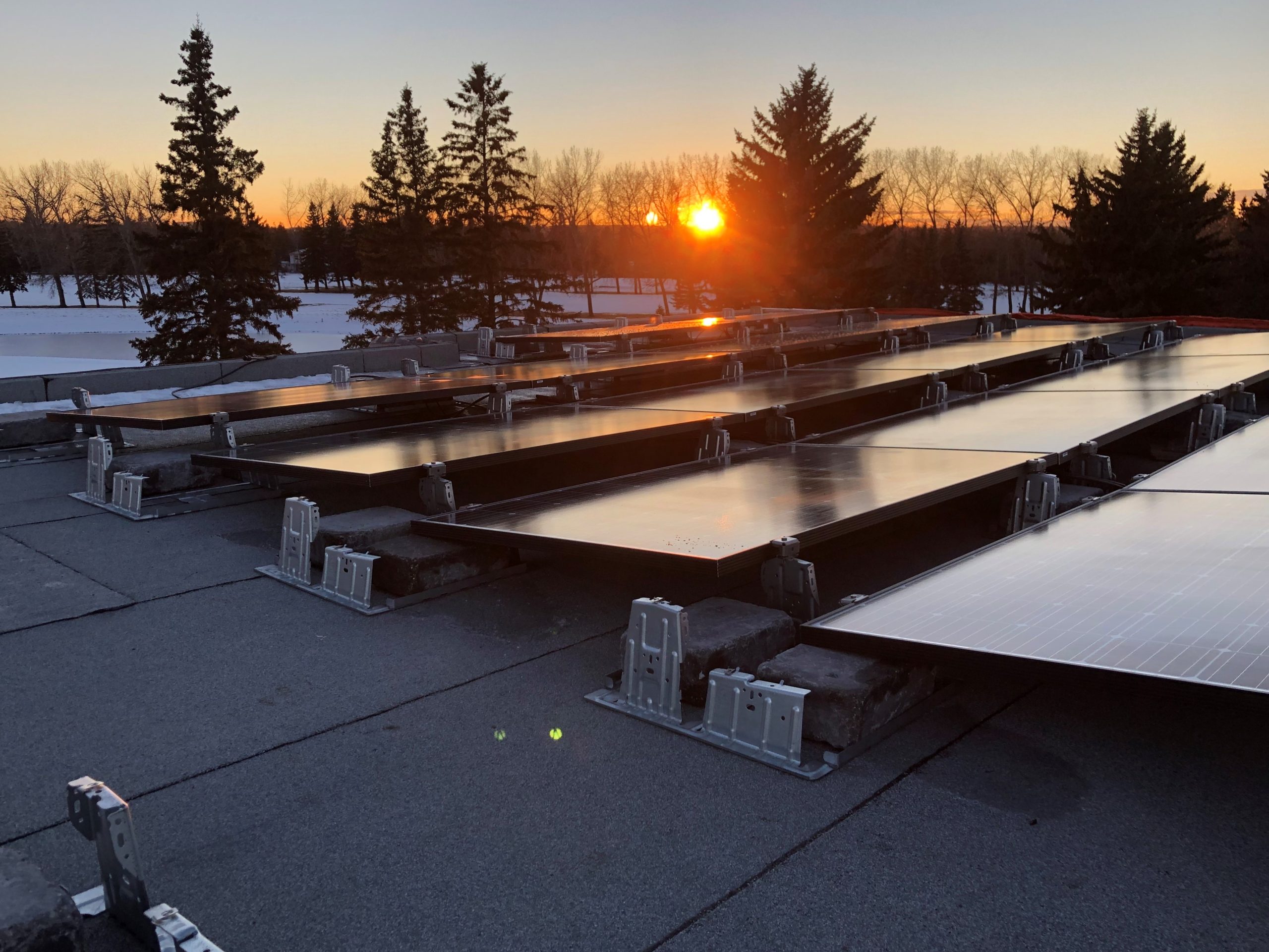

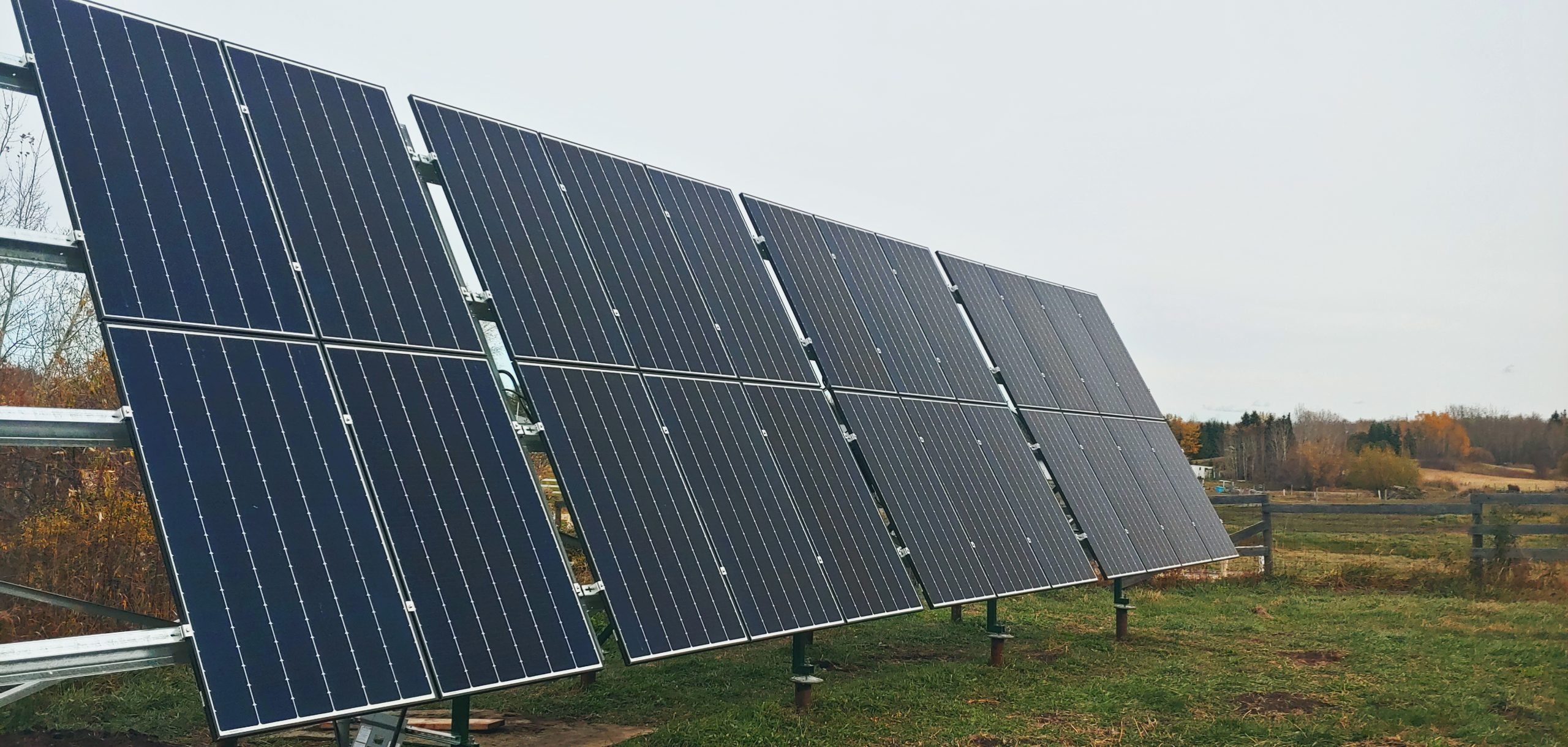
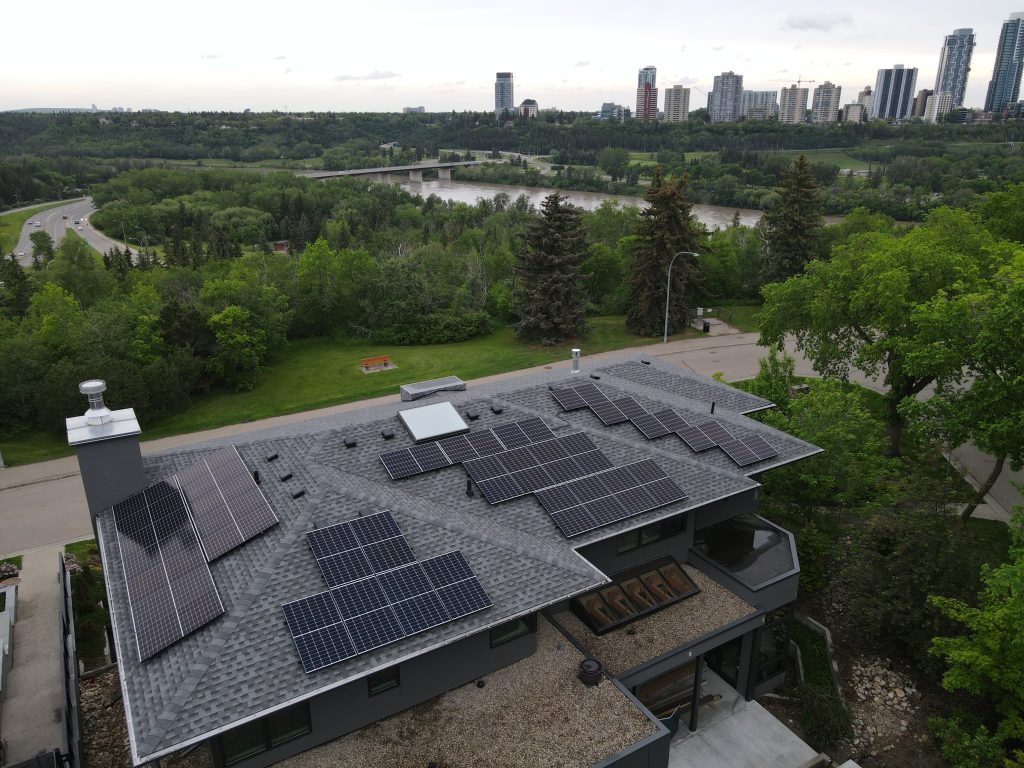
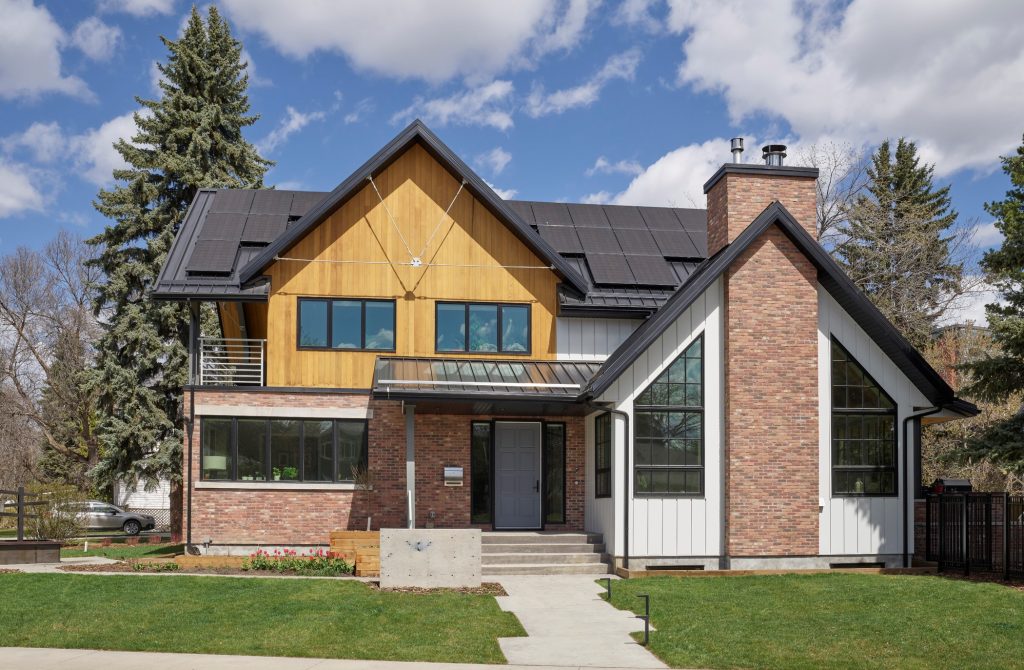
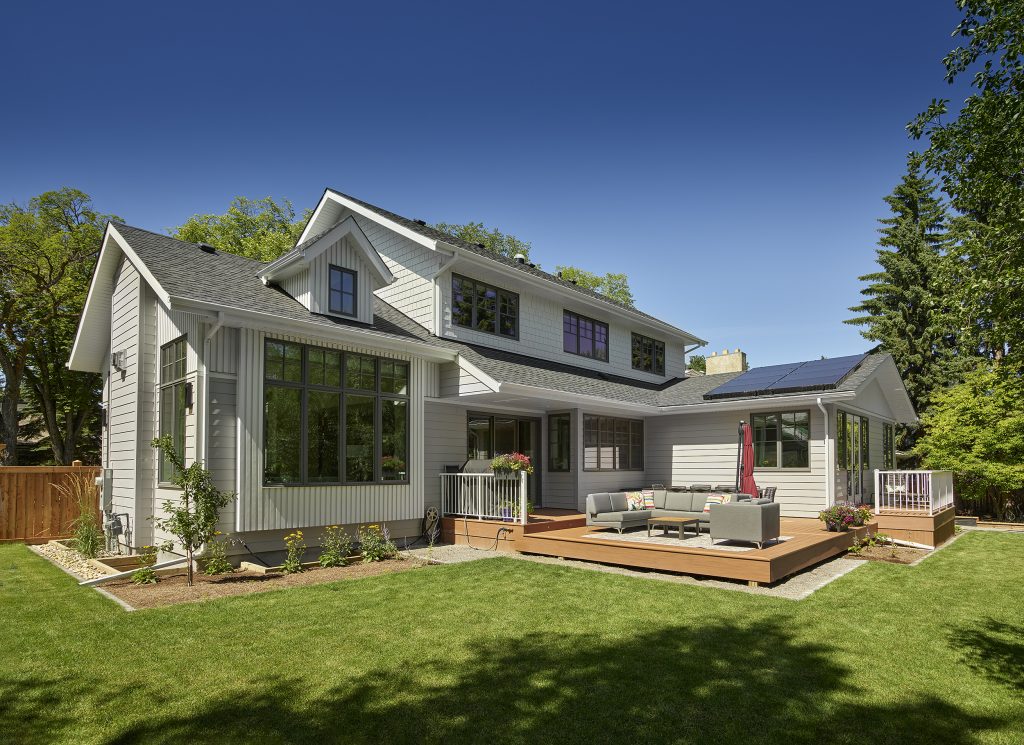
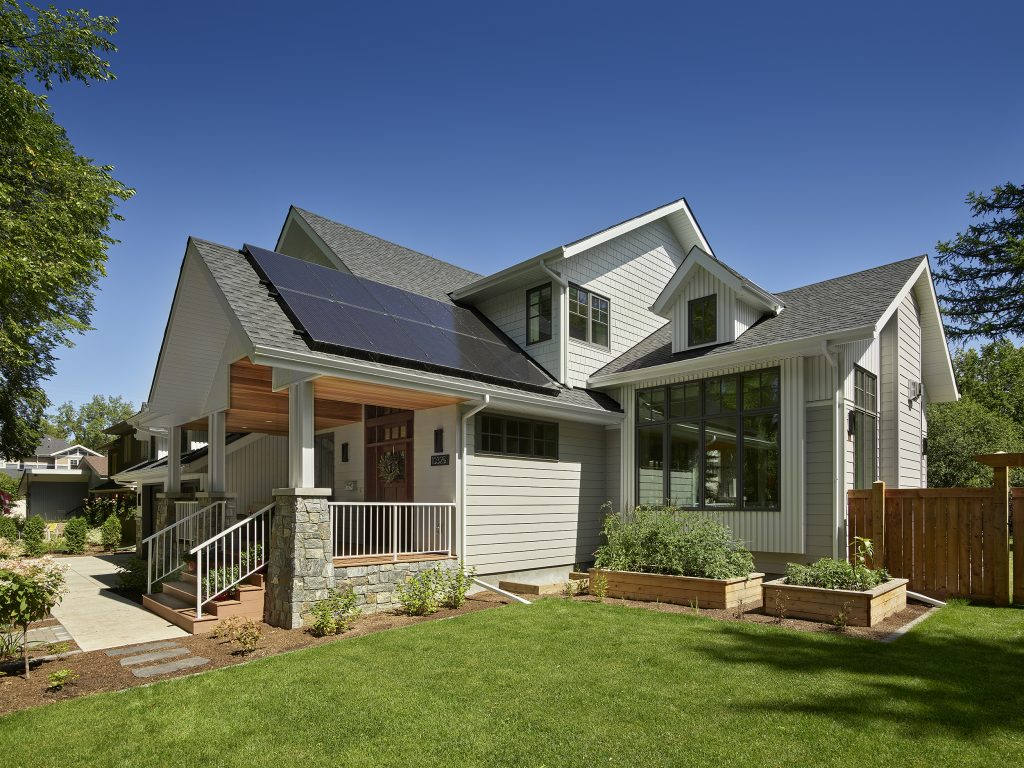
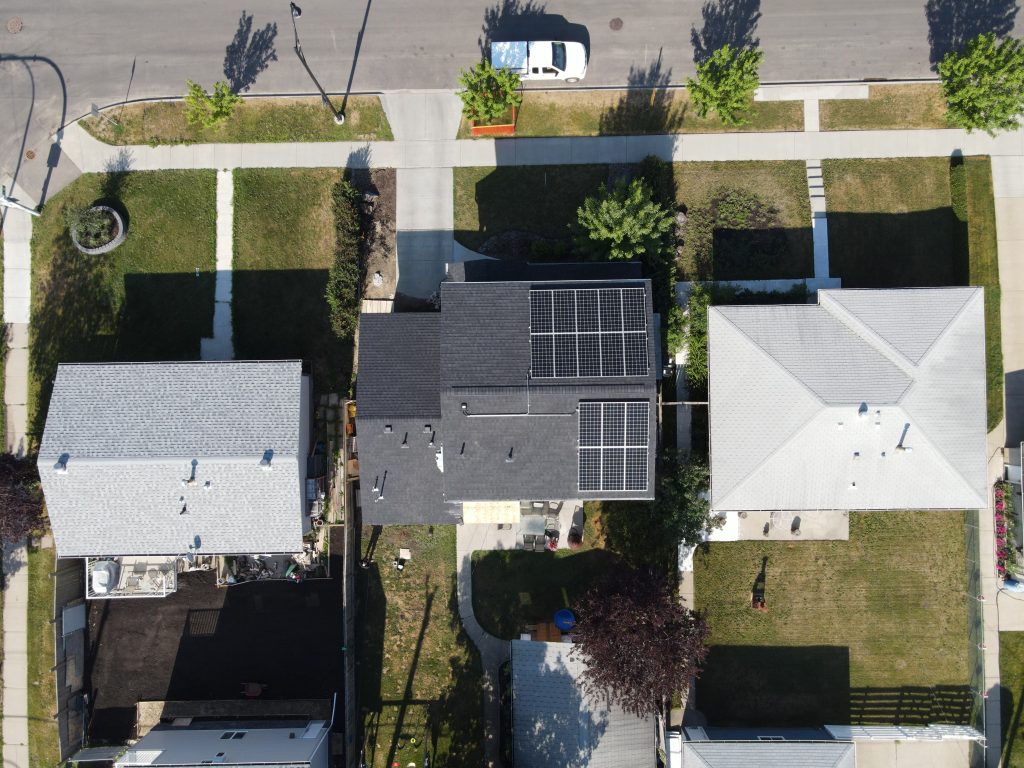
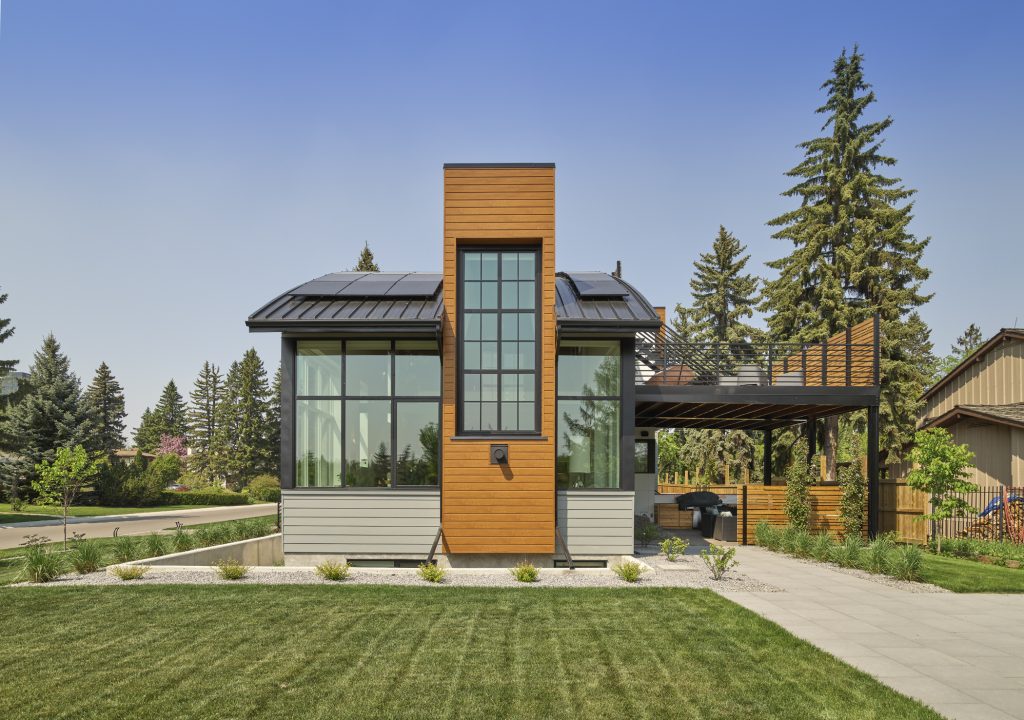
Solar FAQ
Habitat Studio understands homes – how your home is your protected habitat- and it should be treated as such. Habitat Studio is committed to the highest level of quality and your experience is central to our business. We start by listening to your goals and ideas, answering all your questions along the way. We will manage every part of the design and installation of your PV project with professionalism and care, and we carefully select the best components and industry leading performance models to ensure your PV system operates at optimum production, giving you peace of mind throughout the many years of solar generation.
It all depends on how much electricity you use in a year. Habitat Studio will ask to review a minimum of 12 months of your electricity bills to get an accurate idea of how big of a solar PV system you will need to fully offset your annual electricity consumption.
Current legislation in Alberta stipulates that a homeowner with a solar PV system (a microgenerator) can
offset up to 100% of their annual electricity needs. For example, if a home uses an average of 600 kWh/month, that equals 7,200 kWh/year of electrical energy used. This household is allowed to install a solar PV system that will produce 7,200 kWh/year of solar energy.
With solar energy, the bulk of the energy is produced in the summer months, with relatively little energy produced in the winter. The example PV system that produces 7,200 kWh/year, may produce 1,100 kWh in July, but only 120 kWh in January. It is the annual amount of energy that matters to meet the regulations in Alberta.
Part of a solar PV system is a piece of equipment called the inverter. The inverter will take the DC electricity produced by the solar panels and will convert it to useable AC electricity for your home.
No, a solar PV system can operate with only a connection to your home’s electricity panel. This is called a grid-tie PV system. The grid will act as a sort of ‘battery’ in the fact that the grid will absorb any excess solar energy produced that is not needed in your home at the moment, and you will get a credit on your bill for this energy. During times when the PV system cannot produce enough energy for your home, like early mornings or late evenings, the balance of electricity needed will be bought from the grid.
Yes! In Alberta, any excess solar power that isn’t being used in your home can be sold back to the utility for a credit. In Alberta, the amount of the credit for solar energy is equal to the amount you are charged for buying electric energy from the utility.
E.g. If you pay $0.079/kWh for electricity from the utility, then any solar energy sent back to the utility is credited at $0.079/kWh
Generally, the most common type of solar PV system installed on rooftops in Alberta are grid-tied systems, meaning that they know how to make their electricity by matching the electricity from the grid (240 volts, 60 Hertz). Whenever the power is on, the grid-tied PV system will match that power signal from the grid and produce solar energy. However, when there is a power outage, there is no longer any grid signal for the grid-tied PV system to match (0 volts, 0 Hertz), so no solar power can be produced.
In Alberta, this is typically not a big issue as we have a very reliable electricity grid with very few hours of outages per year, so very little solar energy production will be lost due to outages.
There are PV systems that are called stand-alone systems, or hybrid systems. These types of systems are smart enough to make their own electricity without the need to follow the grid signals, and so these types of systems can produce energy during power outages. It is worth noting that stand-alone and hybrid systems are more expensive to install than a grid-tied system.
No, a PV array does not have to point directly south. South is the best orientation for a PV array but having a PV array oriented to the east or west, or east-and-west, works just about as well as south. In some special cases, having a PV array on a low-sloped, north facing roof can still be good enough to get that extra little bit of energy that you need. Come talk to us at Habitat Studio and we can explore all the possibilities that suit your specific situation.
The annual savings of a PV system is dependent on a number of variables, including the size and orientation of the PV system, your electrical consumption, and the rates that you pay for your electricity. The typical, well designed PV system will payback in 10-15 years when all of these factors are considered (but can also be sooner).
There are, however, things that you, the homeowner, can do to help recoup your investment faster. Solar energy is much more valuable (about twice as much) if you use that solar energy in your home as it is being produced instead of selling your excess solar energy back to the grid.
Let’s use an Edmonton relative example. Solar energy used in the home has a value of about $0.16/kWh (because you are avoiding buy electricity from the grid, and the delivery fees along with it), and solar energy sold back to the grid has a value of about $0.07/kWh (This will of course depend on where you live in Alberta, and the electricity rate plan you are on). You can increase the solar energy you use in your home by utilizing the time delay functions on your appliances (dishwasher, washer, dryer, etc) so that they run in the daytime instead of in the early mornings or late evenings.
There are two major parts to a PV system, the solar panels that you see on the roof, and then there is the inverter(s) that convert the solar panels DC electricity to AC electricity that you use in your home. All solar panels are warranted to perform for 25 years but are expected to operate for 30+ years because they are a simple, solid-state device with no moving parts. The inverters generally have a life expectancy of about 15 years and will need to be replaced once during the lifetime of the panels. The inverter replacement typically only costs a fraction of what was paid for the original PV system.
We can do both types of inverter systems, and we decide based on the unique aspects of each roof or field that the solar PV array is going to be installed at.
Central inverters, generally called string inverters, have many solar panels connected to them, and have the benefit of a slightly reduced retail price compared to non-central inverters. One big drawback is that if that central inverter fails or has a fault, then up to 100% of the solar PV system can be offline and not produce energy.
Remote inverters (generally called microinverters) have the inherent benefit of being modular in design. Because microinverters have less solar panels connected per inverter, there is more flexibility in the design and electrical connections (useful for multiple roof faces and orientations). Another benefit with microinverters is if one microinverter fails or has a fault, then chances are there are still multiple microinverters in the system that can still keep on working and producing energy. A disadvantage of microinverter systems is that with multiple inverters in the system, there is many more possible points of failure. But again, because microinverter systems are modular by design, one failed microinverter means that the majority of the system can still operate and will not be 100% down.
In Alberta we receive a lot of solar energy! The amount we receive can be measured in units of energy per power, kWh/kW per year.
In Edmonton, we receive roughly 1200kWh/kW per year. For an average solar panel (let’s assume 400 watts) the amount of energy that it can produce equates to roughly 480 kWh/year. That is enough energy to run an EnergyStar fridge/freezer for a year.

It is strongly recommended to never get up on a roof, or put yourself in any danger, just to clear off your solar panels. If you can safely reach your solar panels with a roof rake (a shovel with a very long handle) from the ground, then there is no problem clearing off your solar panels of snow.
The reason it is not recommended otherwise, is because in Edmonton winters, we have very short days, and the sun is also very low in the sky. The extra energy that you may produce from clearing off the solar panels is generally not worth the time that it takes to do it. It is best to leave the snow on the panels until the snow naturally slides off. When that happens depends on how steep the solar panels are and how warm it is outside. Generally speaking, snow will start to slide off when it is sunny and -10°C air temperature outside, or when it is cloudy and near 0°C temperature outside
Once the electrical inspector has completed the final inspection, usually within a couple days of completing the installation, the solar PV system can be turned on, and start producing energy right away!
Currently, the federal government offers an interest free loan up to $40,000 over a 10 year term from the Greener Homes program.
To be eligible for the Greener Homes program, you must have an EnerGuide Home Energy Evaluation done on your home by a certified Energy Advisor. This will rate your home’s energy use. There are two types of Home Energy Evaluations; a pre-retrofit and a post-retrofit. (A retrofit being a solar PV system in this case). For the Greener Homes Program, you need to complete both a pre and post-retrofit Home Energy Evaluation. Habitat Studio is happy to assist you through the process.
Any size electrical service will do (100A, 150A, 200A etc.). The main thing that you want your electrician to look at, is the bus rating of the electrical panel. It is most ideal if the bus rating of the electrical panel is greater than the main breaker rating.
E.g., If you have a 100A service and main breaker, the bus rating should be 125A. If you have a main breaker that is 150A, make sure the bus rating is 200A or 225A. If you have a 200A main breaker, make sure the bus rating is 225A.
By ensuring the bus rating is greater than the main breaker rating, you are capitalizing on the maximum solar breaker allowed in that electrical panel, as per the electrical code.
The best combination of main breaker and bus rating that give the most potential for solar PV, and is commonly available, is a 150A main breaker in a panel with a 225A bus.
There is some nuance to this question, in the fact that it depends on how the home is heated.
In the Alberta context, most homes are heated with natural gas. In the natural gas heated home, if the building envelope upgrades are done (more insulation, better windows), there would be a reduction in the heat loss from the home, thus requiring you to purchase less natural gas to heat your home, saving you money on your gas bill.
How much those savings on your bill are depends on how much of an improvement that you made to the building envelope. Our experience tells us that you wouldn’t save as much money as you would by purchasing a PV system to offset 100% of your annual electrical needs, and had all of those savings on your electricity bill. So, if you heat your home with natural (methane) gas, there is more potential bill savings from adding a PV system. (This option also has the added benefit of reducing GHG emissions from burning less methane gas to heat your home).
Now, let’s say your home is heated with electricity, either through baseboard heaters or a heat pump (ground source or air source). In this case, it would be much more prudent to upgrade the building envelope and insulation first, thereby reducing the heat losses from the home, and thus reducing the amount of electricity needed to heat the home. It is much better to increase the efficiency of your home, by reducing the amount of electrical energy input needed, and then in the future when there is money for a PV system, the PV system can be smaller because your electricity needs are now lower.
One could always legitimately argue that the end-of-life for solar panels poses a problem due to the lack of recycling availability. While there is a lack of solar panel recycling infrastructure right now, there is enough planning and development to scale up the processes to the efforts that will be needed when we will have a large influx of PV systems that are coming to the end of their life.
Environmentally, the mining and processing of the raw materials needed for solar panels is not without harm. Just like any mining or resource extraction, there are some negative effects. But the benefit to solar panels is that during their operation they are a non-polluting energy generator, and the fuel is free! No fossil fuel or nuclear generator can claim those two aspects!
Battery Energy Storage Systems (BESS) is the next big thing. What this does is it allows you to store energy on-site, instead of always sending your excess solar back to the grid. This way, you can maximize your solar self-consumption right in your home, instead of selling it to the grid and then buying it back later in the evening. The economics of this use case are highly beneficial to the consumer, but only when battery price points are low enough, and the utility rate structures are conducive to this use case. Right now, in Canada, battery price points are not at the place they need to be to be universally economical.
Maximizing solar self consumption is only one use case for battery energy storage. There are a handful of other use cases that could be economically beneficial, if only there were compatible utility tariffs to make them work.
Without going into too much technical detail, a home with a BESS could theoretically store excess renewable energy from solar and wind farms in their battery. A BESS could also sell energy from the battery to the grid during high stress times when the grid needs it, or batteries can also help reduce peak demand cost by doing what is called peak shaving. At this time, our utilities need to transform their services to go along with the renewable energy revolution.
Another cool aspect to BESS, is that EV batteries can be used to interact with the grid, storing energy, releasing energy, and getting paid by the utility for these services provided by each use case. Utilizing EV’s for this purpose is called V2G (vehicle-to-grid).
